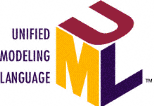I'm Baaaaaaack!!!!!
After a two month hiatus, I'm back once again publishing the ITscout Blog. Please forgive my absence. I just needed a break. Writing the blog was becoming an obsession.
 Everyday I compulsively checked the statistics reported by Site Meter, a counter that keeps track of the number of visitors to the ITscout Blog. I was driving myself crazy whenever the number wasn't growing. Most surprisingly, at least to me, was that readership increased during my absence. All I can imagine is that the work I was doing for IASA, creating the Architecture Resources Repository, stimulated new interest in the ITscout Blog.
Everyday I compulsively checked the statistics reported by Site Meter, a counter that keeps track of the number of visitors to the ITscout Blog. I was driving myself crazy whenever the number wasn't growing. Most surprisingly, at least to me, was that readership increased during my absence. All I can imagine is that the work I was doing for IASA, creating the Architecture Resources Repository, stimulated new interest in the ITscout Blog. Didn't everyone appreciate that I was spewing forth pearls of wisdom? Why weren't people beating a path to the ITscout Blog door? After all, who could possibly disagree with my metaphorical description of architecture as three rope-like bridges where each rope was actually three intertwined strands corresponding to 1) modeling, 2) documenting, and 3) communicating?

The bridge analogy is used to explain how architecture literally connects between business and technology by helping business people better understand technology while helping technology people better understand business. The reason why there are three bridges is to differentiate among 1) enterprise architecture, 2) software architecture, and 3) cross-domain subsets like security architecture.
Modeling is an essential element of architecture.
 There are many products that help architects create graphical models, such as Microsoft's Visio (Microsoft acquired Visio), Telelogic's System Architect (Telelogic acquired Popkin Software), and Troux's Metis (Troux acquired Computas). Most modeling tools support UML, the Unified Modeling Language.
There are many products that help architects create graphical models, such as Microsoft's Visio (Microsoft acquired Visio), Telelogic's System Architect (Telelogic acquired Popkin Software), and Troux's Metis (Troux acquired Computas). Most modeling tools support UML, the Unified Modeling Language. Documenting refers to the process of populating models with content. Whereas models provide the schema or framework for describing architecture, the devil is in the details. That's where the process of documentation comes in. It involves collecting facts and properties and then organizing that information according to underlying models. For example, component-based architecture products like LogicLibrary's Logidex and Flashline's Registry can help map and discover software development assets. Similarly, various software and hardware asset management tools available from many different vendors can be used for performing software and hardware inventories, respectively. This information is invaluable for managing software licenses as well as financial accounting depreciation schedules.
Communicating is the final member of the architectural triplet. Designing models and capturing documentation is virtually worthless unless the information can be easily and readily accessed. My company, Flashmap Systems, specializes in organizing, visualizing, and communicating information targeted to both IT and business people. Flashmap's products are designed to deliver a simplicity and elegance that contribute to a good user experience. As Apple's iPod has clearly demonstrated, success in technology has less to do with features, and more to do with ease of use. Simplicity is the key to effective communication. The last thing any communication tool should do is confuse people. More features aren't better. Indeed, feature overload is the quickest path to confusion. Simplicity means getting something done in a minimal number of simple steps. If a communication product is complex, intimidating, or confusing, its chances for success are scant. Any feature that requires learning will only be adopted by a small fraction of users because, frankly, nobody has time to learn new features. The best communication tool is one that people don't even notice. Style and elegance are ultimately what determines the user experience.
 Site Feed
Site Feed

2 Comments:
Don't get too upset about your site traffic, as we are a small and it appears, relatively obsure lot...:)
I took the liberty of posting your Repository e-mail the other day from ITScout in the hope that it would generate further interest. Hope you don't mind...
You can check out my blog at http://processdesigner.blogspot.com. You may also wish to check out James McGovern's blog (yes, James McGovern the EA author) at http://duckdown.blogspot.com.
Perhaps if we comment and cross-link to each other's posts (positive or negative commentary allowed...:)) we will drive up traffic to all of our blogs and educate some folks in the process.
Best regards,
Bob McIlree
If you're interested in finding Blogs related to Architecture, I recommend you look at the list of Architect Blogs posted on the Architecture 'Resources' Repository.
Once you've logged into the Architecture 'Resources' Repository, which you can do by clicking on the link http://www.ITscout.org/Architecture, you can then go directly to the Architect Blogs list by clicking on following link:
http://www.itscout.org/itguide/category.cfm?category_id=14154
Post a Comment
<< Home